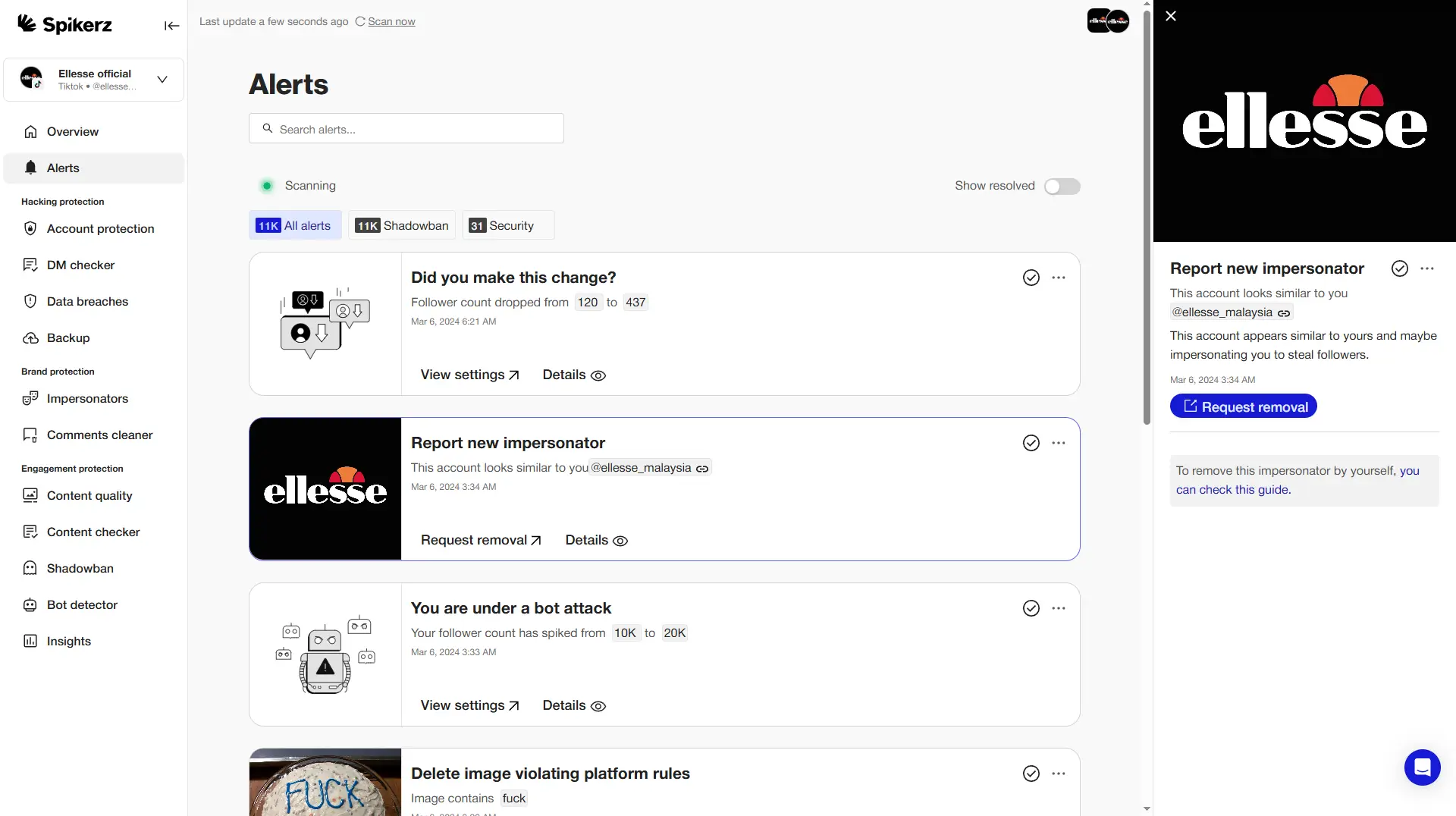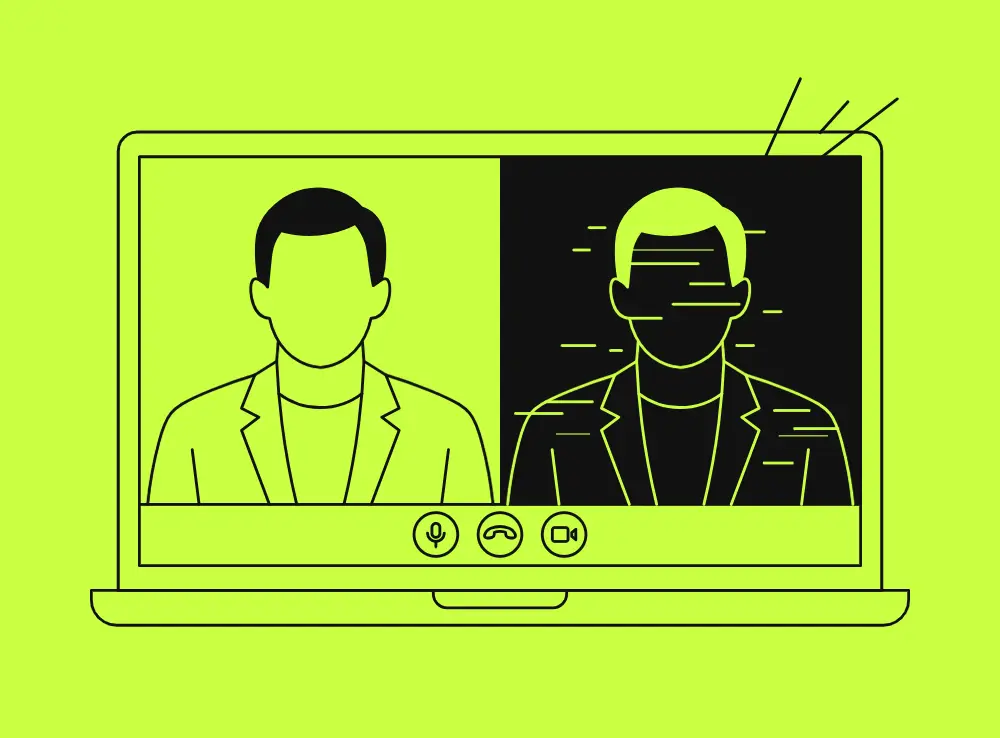Deepfake Defense: Protecting Your Brand from AI Imposters
Deepfake Defense: Protecting Your Brand from AI Imposters
Imagine the following scenario: Your employees think they're video-calling with the CEO. The voice matches perfectly, the facial expressions look natural, and the background is familiar. But something feels off about the urgent request to transfer $50,000 to a "confidential vendor."
Unfortunately, this kind of scenario is one of the fastest-growing threats businesses face: deepfake technology. Bad actors now use AI to create convincing fake videos and audio recordings that can trick even cautious employees into revealing sensitive company information or authorizing fraudulent transactions.
What makes this particularly dangerous is that the technology is now so accessible and realistic that distinguishing between real and synthetic content requires specialized knowledge. That's why companies must take this threat seriously and invest in understanding how deepfakes work and how to protect themselves against them.
In this blog post, we’ll explore what deepfakes are, how they work, why they pose significant risks to your business, and most importantly, five practical strategies you can use to defend your organization from AI impersonation campaigns.
What Are Deepfakes?
Deepfake is an acronym that comes from deep learning “deep” and “fake.” The technology uses artificial intelligence to create convincing fake images, audio, and video recordings of real people.
Here’s how the technology works: The system uses deep learning techniques to quickly understand patterns in existing footage. It then blends this data with new content to create realistic-looking videos or audio recordings that appear real to most viewers.
Until recently, creating convincing fake video content was extremely difficult and required extensive technical expertise. However, deepfake technology has improved dramatically, making video manipulation accessible to anyone with basic technical knowledge and enough time to learn the process.
What’s worse is that modern deepfakes have become so realistic that most people can’t distinguish between real and fabricated content without specialized tools or training.

How Deepfake Technology Creates Fake Content
Deepfakes rely on algorithms that blend existing footage with new content to create realistic impersonations. For example, these algorithms analyze subtle facial features through machine learning to understand how a person's face moves and changes expression.
Deepfakes use two algorithms working together to create and refine fake content: a generator and a discriminator.
The generator builds a training dataset based on the desired outcome, learning patterns from hundreds or thousands of images or video clips of the target person. Meanwhile, the discriminator analyzes how realistic or fake the initial version of the content appears, essentially acting as a quality control system.
This process repeats continuously, enabling the generator to improve at creating realistic content while the discriminator becomes more skilled at spotting flaws for the generator to correct. Each iteration produces more convincing results until the fake content becomes nearly indistinguishable from the real.
That said, if you want a better understanding of how this technology works in practice, I recommend you check out Corridor Crew's video. Their video shows exactly how deepfake technology works, making it easier to understand the practical implications for business security.
Why Are Deepfakes Dangerous For Brands And Businesses?
There are many reasons why deepfakes are dangerous for businesses, however, it mainly comes down to tricking people into revealing sensitive company information that could lead to disastrous consequences. Other examples include:
- Blackmailing employees with fake content to damage their reputations and place both individuals and companies in legally risky situations.
- Manipulating stock prices via releasing fake videos or audio clips intended to mislead investors.
- Committing fraud by impersonating key employees (like the CEO or CFO) to steal financial accounts and other personally identifiable information.
- Deceiving security systems by using deepfakes to bypass facial recognition tools used for access control or computer login authentication.
- Taking over social media accounts by tricking platforms into handing over login credentials.
The good news is that there are effective ways to protect your company, like deepfake recognition software and regular employee training programs. In fact, according to Gartner research, demand for software that spots disinformation campaigns is growing quickly. By 2028, 50% of enterprises will adopt products, services, or features specifically to address disinformation security use cases, up from less than 5% in 2024.
How Can Businesses Protect Themselves From Deepfakes?
There are five main strategies that businesses can use to protect themselves from deepfakes and disinformation campaigns. Each approach addresses different vulnerabilities and creates multiple layers of defense against these attacks.
1) Train Your Employees To Identify Deepfakes
One of the most effective ways to protect your business from deepfakes is training your employees to spot telltale signs of generated content. Here are some of the things your employees should look out for:
- Visual and audio cues: Look for unusual or awkward facial positioning that doesn't match natural human movement. Watch for unnatural facial or body movements that appear robotic or somehow disconnected. Uneven eyes are another common flaw, where one eye appears slightly bigger than the other or are positioned differently.
- Skin tones: Pay attention to unnatural skin tone, particularly around the face and neck area where different video sources might not blend perfectly.
- Visual artifacts: Zooming into the video often reveals digital artifacts that aren't visible at normal viewing distances.
- Odd blinking: Earlier deepfake technology struggled with natural blinking patterns, causing subjects to blink too little or too much compared to normal human behavior.
- Dead eyes: Look for tiny deviations in reflected light in the subject's eyes. It often looks inconsistent with the lighting conditions shown in the background.
- Age inconsistencies: The aging of skin often doesn't match the aging of hair and eyes.
- Reflections on glasses: Glasses either show no glare or excessive glare, with the glare angle remaining static despite the person's movements.
That said, deepfakes have become so good they’ve overcome some of these indicators. For example, modern tools now support natural blinking and other biometric evidence, making detection increasingly difficult without specialized software.
2) Monitor Social Media for Brand Impersonators
Businesses should always scan for people impersonating their employees and brand to prevent them from tricking customers and other employees into performing harmful actions.
The best way to do so is to use a social media security tool with impersonation monitoring capabilities. These systems scan multiple platforms, identifying unauthorized use of your brand assets more efficiently than manual monitoring.
For example, Spikerz allows you to upload brand assets like company logos, employee photos, social media profiles, and website links to identify unauthorized users. After you do that, the system continuously scans social platforms for accounts using your content and immediately alerts you when impersonation attempts are detected. It’s an effective tool for saving companies a lot of time and effort.

3) Use Software for Monitoring the Deep Web and Mass Media
There are two main types of monitoring software that help identify ongoing disinformation campaigns: social and mass media monitoring, and deep/dark web monitoring.
- Social and mass media monitoring software scans public platforms and news outlets for influence operations aimed at swaying public sentiment using harmful narratives about your company.
- Deep and dark web monitoring helps brands monitor bad actors discussing targets and tactics. This type of monitoring also identifies when stolen data like credentials and employee identities appears for sale on underground marketplaces.
These monitoring systems work together to provide early warning of potential deepfake campaigns targeting your organization. Check both software for broad protection.
4) Use Social Media Security Tools for Account Protection
Social media security tools protect brand accounts from online threats like hacking, account hijacking, phishing messages, bot attacks, spam, and unauthorized changes to account security settings like access management, passwords, and phone numbers for account recovery.
These platforms also monitor for impersonating profiles across social networks, providing protection against deepfake-enabled social engineering attacks.
Each security tool works differently, but platforms like Spikerz immediately alert you to identify threats through your main dashboard or dedicated alert section. The platform integrates monitoring across multiple social networks, providing centralized security management that reduces the complexity of protecting your online presence.
5) Document Impersonator Evidence
While current regulations around deepfakes and impersonators are inconsistent across jurisdictions, maintaining a folder with all evidence related to impersonation attempts provides valuable legal and operational benefits.
Save images, videos, links, and screenshots of impersonating profiles along with detailed documentation of when and where you discovered each incident.
And even when legal action isn't needed, it may still prove useful for taking down fake profiles from social media platforms. Most platforms require evidence before taking action against reported accounts. Documentation is essential for successful removal requests.
Conclusion
Deepfake technology has made it very accessible for cybercriminals to target businesses of all sizes. Creating convincing fake videos and audio recordings poses unprecedented risks to company security, however, the five strategies we shared in this guide provide a framework for defending your organization against them.
Employee training creates your first line of defense by teaching staff to recognize deepfakes. Social media monitoring identifies impersonation attempts before they can establish credibility. Deep web surveillance provides early warning of planned attacks. Social media security tools offer automated protection across multiple platforms. And documentation ensures you have evidence needed for legal action and platform reporting.
As deepfake technology continues advancing, the organizations that invest in their cybersecurity will maintain competitive advantages that others don’t have. Don't wait for a deepfake attack to compromise your business, implement these strategies before criminals target your organization.



